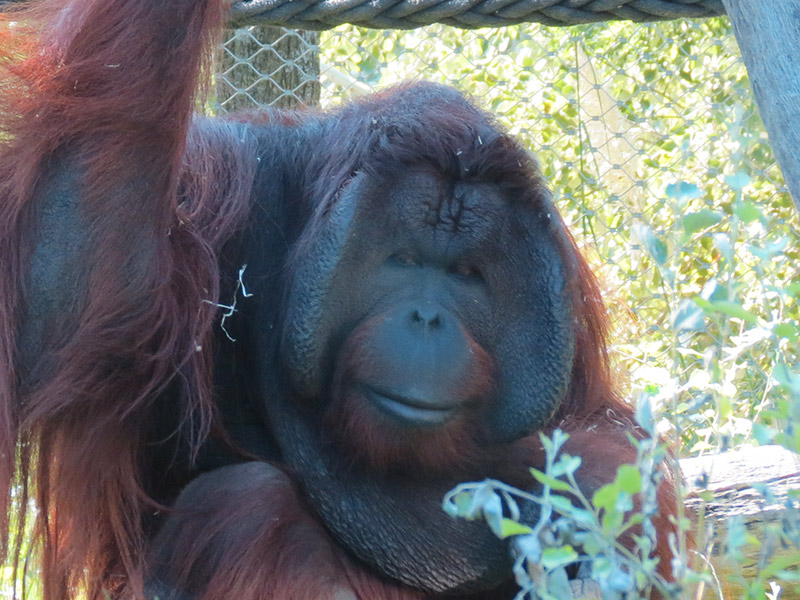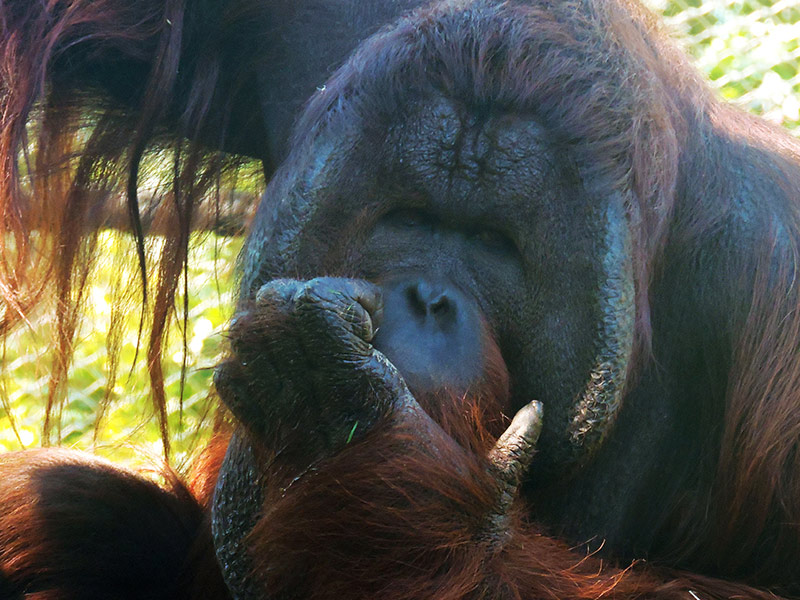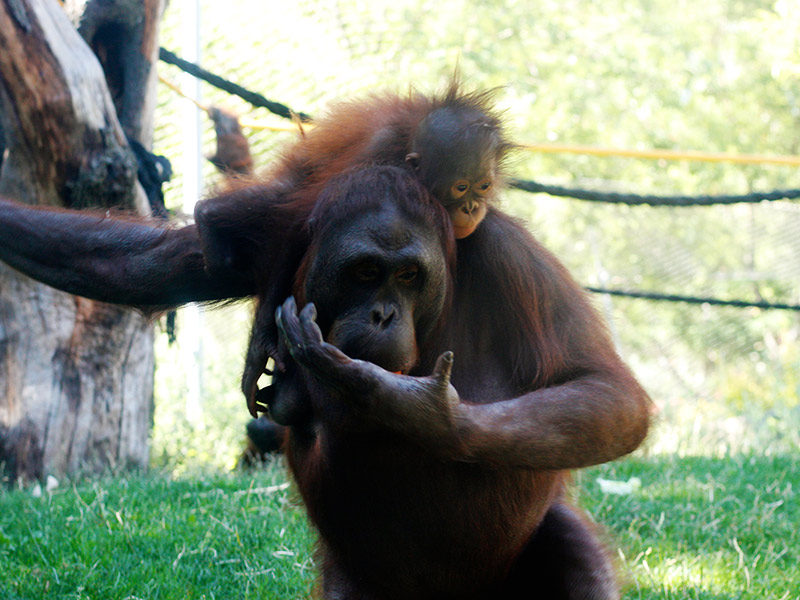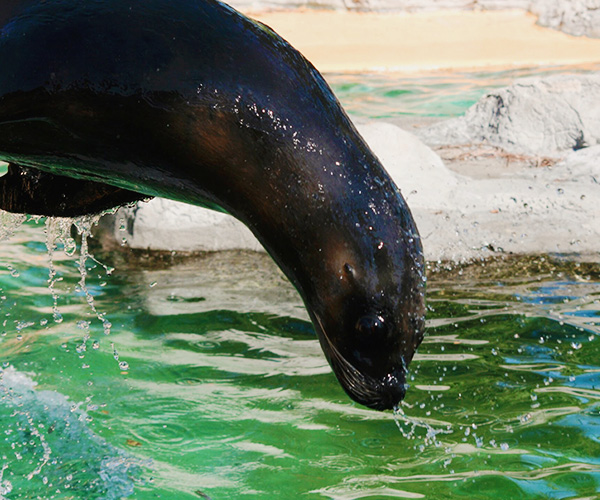The Malay language describes the Orangutan as “man of the forest” (this is the meaning of the Malay expression “orang hutan”). Of the great apes, it is the one that spends the most time in the trees.
Their arms, with reddish-brownish hair, are long (these upper limbs allow them to lead an eminently arboreal life). Orangutans are stocky, stocky and short-legged. There is great sexual dimorphism between males and females: the former have very pronounced cheeks, unlike the latter.
Lowland rainforests are their natural habitat. The current population of Bornean orangutans is estimated at around 104,700 individuals. Today, orangutans are found only in the northwest of Sumatra and in pockets on the island of Borneo.
Mothers give birth to a single calf at each birth, which occurs in cycles of between four and eight years. Gestation lasts approximately eight and a half months. The female carries the calf, which does not stop suckling until it is three years old. The female orangutan reaches sexual maturity at 12 years of age, while the male is not considered an adult until 15 years of age.
Solitary and intelligent, they have developed their own extraordinary culture, which they transmit from generation to generation. They are capable of making their own tools. Socially, they are very independent, although females sometimes gather in groups of four or five individuals.
They feed on fruit, basically, although they complement their diet with vegetable shoots and leaves.
Their situation is critical due to habitat destruction (indiscriminate logging, mining, forest fires). They also face illegal capture for commercialization as pets. Poachers do not hesitate to kill mothers to snatch their young.























